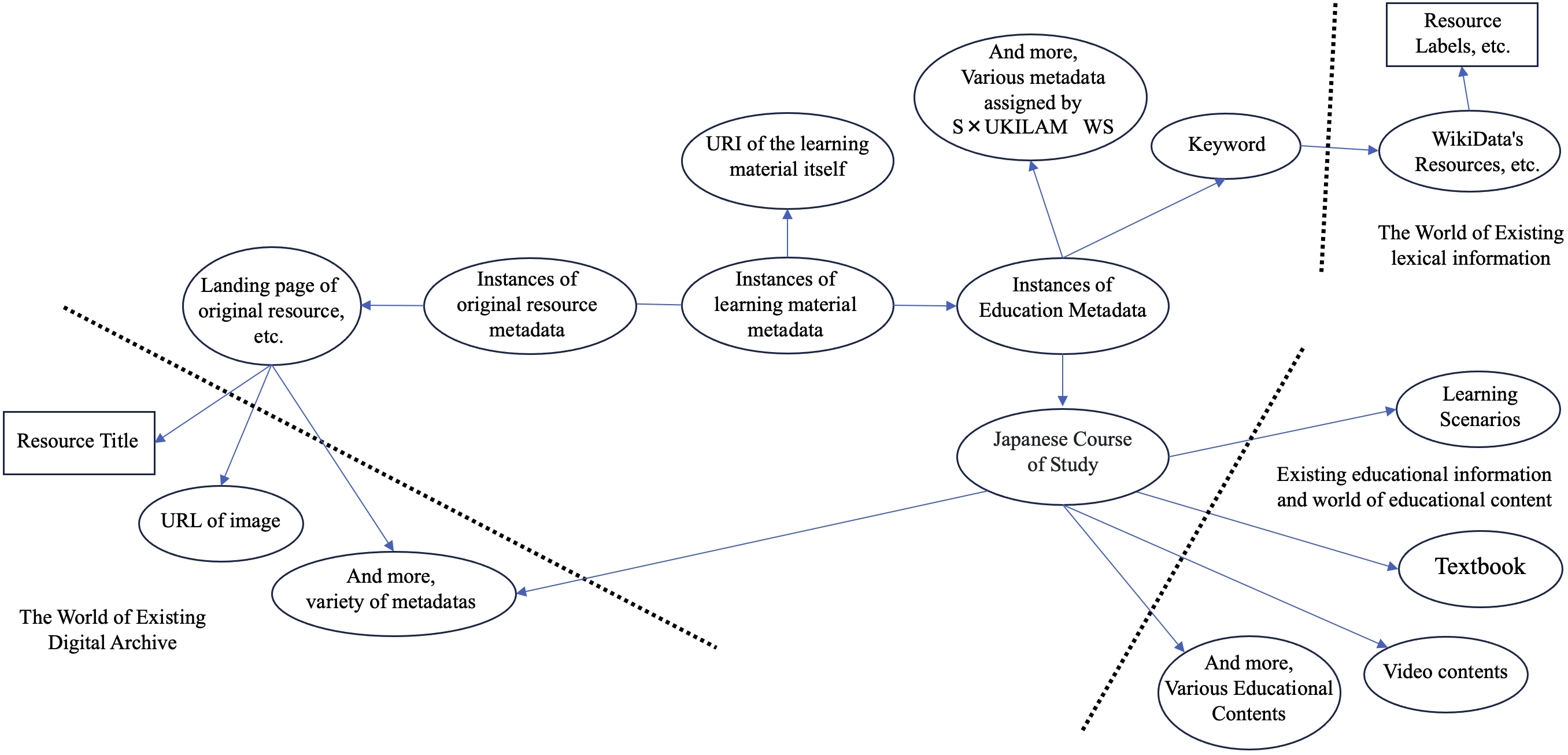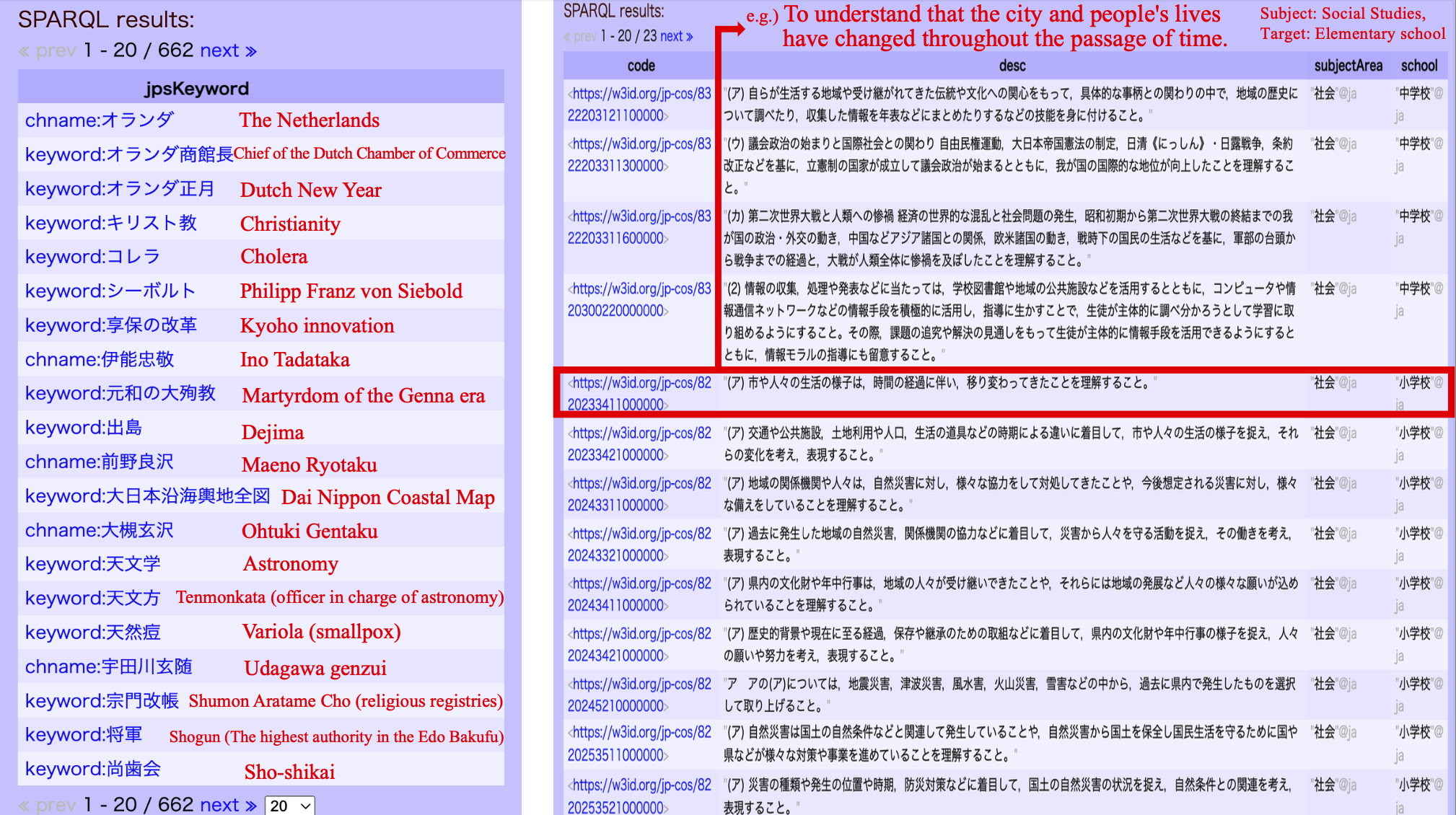1.
Introduction
In the field of elementary and secondary education, there is a growing need to utilize the cultural heritage of diverse regions to foster creativity and action to solve regional issues and multifaceted thinking skills to break away from
prejudice
. In addition, the pandemic has manifested the issue of educational inequality, and the development of a learning environment that is not limited by temporal and spatial constraints has become an urgent matter. (Oi et al. 2020). The effects of using digital cultural resources for proactive learning have also become evident. (Ferrara et al. 2014).
However, many cultural heritages are neither structured nor provided with metadata for education, a factor that reduces accessibility.
Therefore,
this study aims to reinventing an approach to children's learning and accessibility that is beyond the barriers of spatial, temporal and
prejudice
.
We propose a Linked Open Data (LOD) model that connects and structures co-created
"
learning materials
" (
such as learning scenarios
)
with various information and diverse digital cultural heritage.
2.
Motivation and Relevant developments
The assignment of metadata for education requires pedagogical knowledge and experience, which makes it difficult for institutions that provide resources to the public to carry out this task independently. As an effort to solve this issue in a bottom-up approach, we have established the "S×UKILAM collaboration". (Oi et al. 2022). In this schema, elementary, junior high, and high school teachers, libraries, museums, archives, and other institutions co-create digital cultural heritage converted into "learning materials" and open access to them on the IIIF viewer along with educational metadata such as subjects, keywords, curriculum codes, etc.
1
.
However, in this condition, seamless connection and structuring between learning materials and related information are not yet provided. Therefore, we develop a LOD model to promote the educational use of cultural heritage using the Resource Description Framework (RDF), which can describe structured data with high machine readability. In this study, we design a data model that can be linked to already existing datasets such as "Europeana's LOD"
2
(Isaac et al. 2013), "JAPAN SEARCH's LOD"
3
(Kanzaki 2020), and "Japanese Course of Study LOD"
4
(Enomoto et al. 2022), as well as from the perspective of the demands of the educational field.
3.
Methodology
The LOD model of this study is shown in Figure 1. This study targets the dataset of the learning materials archive co-created by the above-mentioned S×UKILAM collaboration. One of the features of our data model layout is that the learning materials as the hub. It is also characteristic that we designed a structure that is easy to connect to other learning materials and external web contents in order to benefit from the fact that multiple metadata are assigned to the target data set.
As a result, the similarity of the metadata makes it possible to easily search for learning materials and cultural heritages, and also leads to the emergence of serendipity. In designing the LOD model, firstly, the URIs defined in the existing LOD such as JAPAN SEARCH were given as the basis for associating external resources, and in case there is no appropriate educational metadata, we prepared our own defined properties. Secondly, RDF data corresponding to the designed model was created and posted on GitHub repository
5
. Consequently, we were able to construct and publish more than 27,000 triples from 114 target materials.
For providing Linked Data, it is also important to be able to retrieve a dataset according to conditions (Kanzaki 2012). Therefore, in this study, we developed a SPARQL endpoint that can easily confirm the contents of RDF data using dydra.com
6
, and released it as "Snorql for Education Metadata"
7
(Figure 2). Furthermore, for general end-users who have difficulty in handling the SPARQL language, an application that provides LOD with sensible operations was also developed and released
8
.
4.
Results and Future work
Our method has enabled to connect with massive digital cultural heritage platform such as JAPAN SEARCH, which possible to search and refer to learning materials from various digital cultural heritages based on general vocabulary and
conceptual keyword such as "Fujiyama," "disaster," "War," etc. In addition, by connecting and structuring Course of Study LOD with learning materials and their metadata by our method, it is possible to retrieve learning goals and explanatory text on the SPARQL endpoints, to search learning materials from the curriculum, and to discover learning materials created from different perspectives and designs even within the same curriculum.
Our proposed model contributes to the informatization of education and the promotion of the use of digital cultural heritages. We will continue to improve the usability and normalization of the data, as well as the linkage with other international contents such as Europeana and DPLA.
Figure 1 The LOD model suggested by this study.
Figure 2 Example of our SPARQL search results.

